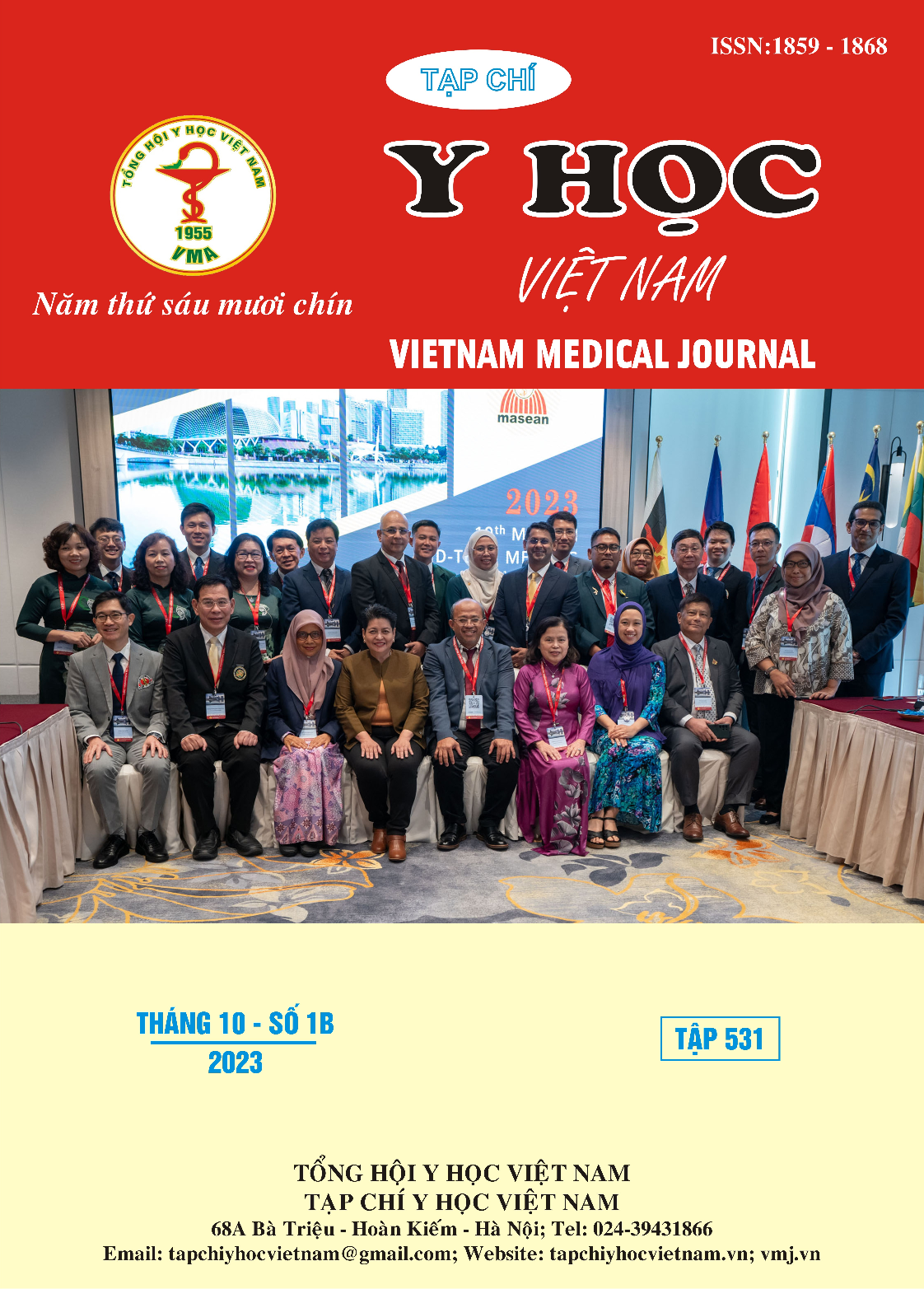CLINICAL AND CEPHALOMATRIC RADIOGRAPHIC CHARACTERISTICS OF PATIENTS WITH SKELETAL CLASS III MALOCCLUSION HAVING ORTHOGNATHIC SURGERY AT 108 MILITARY CENTRAL HOSPITAL FROM 2020 TO 2023
Main Article Content
Abstract
Objective: To describe clinical and cephalomatric radiographic characteristics of patients with skeletal class III malocclusion having orthognathic surgery at 108 Military Central Hospital from 2020 to 2023. Materials and methods: Single-tray orthognathic surgery was planned for patients diagnosed with skeletal class III malocclusion (Steiner’s ANB<0) at 108 Military Central Hospital. Braces were placed 7-10 days before surgery, The group of surgeons included only those with great expertise and experience. All patients followed the same protocol and the same method of surgery. They were assessed by a set of criteria and an assessment tool. Results: Among 39 participants in the study, the female:male ratio was 1.29 (22 females – 56/4% and 17 males – 43.6%). All patients had concave profiles. The percentages of dolichofacial, mesofacial, and brachyfacial profiles were 69%, 31%, and 0%, respectively. Cephalometric analysis showed a decrease in SNA angle, an increase in SNB angle, a negative ANB, an increase in SND and the mandibular plane angle (SN-MP). There was an increase in upper incisor inclination and distance from the incisal edge to NA. There was a decrease in lower incisor inclination and distance from the incisal edge to NB. The distance from Ls to the S-line was decreased while the distance from Li to the S-line was increased. Conclusion: Cephalometric parameters in skeletal, teeth and soft tissue showed characteristic features of skeletal class III malocclusion: maxillary deficiency and mandibular hyperplasia, chin protrusion, hyperdivergent facial pattern, dolichofacial profile, large anteroposterior maxillomandibular discrepancy. Upper lip retruded, lower lip protruded. These are characteristics of patients whose conditions require bimaxillary orthognathic surgery.
Article Details
Keywords
orthognathic surgery, class III malocclusion
References
2. Graber LW, Vanarsdall RL, Vig KW, Huang GJ. Orthodontics-e-book: current principles and techniques. Elsevier Health Sciences; 2016.
3. Lê Tấn Hùng NTS. Đánh giá hiệu quả xoay phức hợp hàm trên–hàm dưới cùng chiều kim đồng hồ trong điều trị lệch lạc xương hàm loại III. Tạp chí Y dược lâm sàng. 2014;108(9):2.
4. Ghassemi M, Ghassemi A, Showkatbakhsh R, et al. Evaluation of soft and hard tissue changes after bimaxillary surgery in class III orthognathic surgery and aesthetic consideration. Natl J Maxillofac Surg. Jul-Dec 2014;5(2):157-60. doi:10.4103/0975-5950.154819


